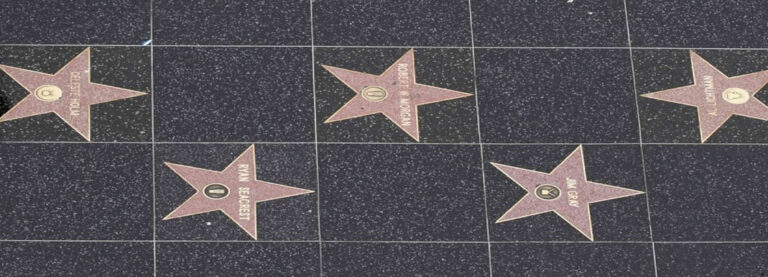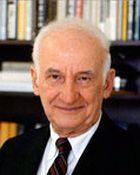
 On June, 27, 2016, aerospace pioneer Simon Ramo died at 103 years of age. Â His quality of life never deteriorated with old age. Â He played tennis regularly on his seven-acre estate in Beverly Hills. Â At age 92, he was appointed presidential chair and professor of electrical engineering at the University of Southern California’s Viterbi School of Engineering. The patent he received at age 100 made him the oldest person ever to receive a U.S. patent. At age 103, he was still intellectually brilliant and had no obvious physical disabilities. Â At the time of his death, he was still active because he did everything right in his career, marriage, lifestyle, intellectual achievements and patriotism.
On June, 27, 2016, aerospace pioneer Simon Ramo died at 103 years of age. Â His quality of life never deteriorated with old age. Â He played tennis regularly on his seven-acre estate in Beverly Hills. Â At age 92, he was appointed presidential chair and professor of electrical engineering at the University of Southern California’s Viterbi School of Engineering. The patent he received at age 100 made him the oldest person ever to receive a U.S. patent. At age 103, he was still intellectually brilliant and had no obvious physical disabilities. Â At the time of his death, he was still active because he did everything right in his career, marriage, lifestyle, intellectual achievements and patriotism.He is considered to be the founder of modern systems engineering and was personally responsible for design of the “Cold War” ICBMs (intercontinental ballistic missiles) that could deliver a nuclear warhead to a target 6,000 miles away in 30 minutes. Â He founded two Fortune 500 companies, TRW (which grew from two employees to more than 100,000) and Bunker-Ramo (now part of Honeywell). Â He was also a competent tennis player and a concert-quality violinist who was so good that he played duets with Jascha Heifetz.
Strong Beginnings
Ramo was born in 1913 in Salt Lake City, the son of storekeeper Benjamin Ramo, a Russian Jewish immigrant, and Clara Ramo, a Polish Jewish immigrant.  The family name, Ramo, came from the 15th-century Spain Inquisition when Jews could choose between death or conversion to Catholicism.  At that time, no Spanish surnames ended in “o,” so the Spanish king added  “o” to names of Jews who converted which made it easy to keep track of the “conversos” and make sure they were practicing their new faith.
His father had him start violin lessons at age six.  When he was eight, his mother took him to the Mormon Tabernacle to hear John Philip Sousa conduct his concert band.  Three years later, he was a being labeled a child prodigy on the violin, so his mother took him to concerts by Jascha Heifetz and Fritz Kreisler.  However, hearing these violinists steered him toward engineering instead of a concert career.  In 1995 he told an interviewer, “There’s room for three or four concert violinists in the world — not even thirty. But engineering, for goodness sakes, there’s all kinds of engineering, it takes a lot of engineers to work out all the things that a society needs.”
As a child he was always smarter than everyone else. Â He skipped several grades and was the best math student and speller in the school. Â During his early school years, he worked in his father’s store and was able to save money. In 1929, as a high school senior, he paid the very large amount of $325 (equal to $4500 today) for an expensive violin that he used to win a regional music competition that won him a full scholarship to the University of Utah that was worth many times his original investment. Â He later said that if he had left the money in the bank, he would have lost it because the bank failed when the stock market crashed.
In 1936 he received two Ph.Ds magna cum laude in engineering and physics from Cal Tech, but it was his talent as a violinist that got him a job.  At the height of  the Great Depression there were almost no available jobs, but recruiters from General Electric were on campus and Ramo entertained them at dinner.  Most of the members of Schenectady’s symphony orchestra were GE employees, including one of the recruiters.  He hired Ramo as a lab researcher because the orchestra needed a good violinist.  At GE, Ramo helped to develop the electron microscope and worked on war-related research during World War II. He also became the orchestra’s concertmaster.
Aerospace Pioneer
In 1946, Ramo wanted to return to California so he took a job with Hughes Aircraft Company, which became the leading electronics supplier for the U.S. armed services, but he soon found out that Howard Hughes was a “nut”.  Ramos worked with the newly created Air Force while at Hughes and in 1953, after mounting frustration with Hughes’ management,  Ramo and his Caltech classmate Dean Everett Wooldridge  left Hughes and formed a company that was forerunner of TRW (R for Ramo, W for Wooldridge) in a former barbershop in the Westchester neighborhood of Los Angeles.  The Air Force, under President Eisenhower, was looking for a team to develop intercontinental ballistic missiles but did not want to work with Hughes, so they went to Ramo’s new company, bypassing other giants such as AT&T and IBM.  Eisenhower said that it was “a research program of the highest national priority, second to no other,” as Ramo remembered the president’s words.
Ramo and Wooldridge’s research led the arms race between the U.S. and the Soviet Union.  General Bernard Schriever, head of the ICBM program, later described Ramo as “the architect of the Thor, Atlas, and Titan” rockets. It soon  became obvious that both countries had enough atomic weapons to destroy each other ten times over, along with the rest of the planet, so it would be irrational to start a war that nobody could win.  In 2002, when Ramo was 90, he directed one of the biggest mergers ever in the defense industry as Northrop Grumman acquired TRW for $7.8 billion.
His Mate for Life
He met Virginia Smith when he was a graduate student at Cal Tech and she was working her way through the University of Southern California (USC) by playing the saxophone in a women’s band.  A wise person chooses a mate who has the same interests and goals.  They married in 1937, soon after she received her degree.  While Ramo worked at GE, she taught high school and during World War II, she also taught  business courses to military officers.  As Ramo’s business in southern California grew and they became weathy, she proved to be a highly effective community and cultural leader and philanthropist who supported the Los Angeles Opera, the United Way and her alma mater, USC as well as Caltech and several other universities.  They remained married for 72 years until she died in 2009.
You Can Influence Your Quality of Life
You better believe that your lifestyle plays a large part in the quality and length of your life. Â Most of my histories of famous people tell about self-destructive behaviors that cause them miserable suffering from diseases and disabilities for many years before death.
• Would you want to spend several years of your short life as Elvis Presley did, suffering from obesity, drug addiction, depression, chronic insomnia, glaucoma, liver damage and chronic constipation?
• Would you choose to smother to death from smoking the way Leonard Nimoy did?
• Would you choose to die of heart failure because you spent all of your time lying in bed, as Marian Anderson did in her later years?
• Would you choose to spend the last years of your life suffering from heart attacks, dementia, shortness of breath, coughing, emphysema, pneumonia and bladder cancer as Frank Sinatra did, from smoking, drinking and carousing?
• Would you prefer to die at age 48 as Al Capone did, so completely demented that he couldn’t recognize or talk to anyone because his brain was destroyed by infections from his many promiscuous sexual contacts?
Ramo Did Everything Right
Simon Ramo is a man who followed all of the rules for a healthful lifestyle and retained his high quality of life for 103 years.
• He received the Presidential Medal of Freedom from President Ronald Reagan when he was 70.
• He wrote more than 60 books, including an engineering textbook that has sold more than a million copies and a guide on how to win at tennis at all costs.  His book on drones, Let the Robots Do the Dying, appeared in 2012 when he was 99.
• He held numerous patents and became the oldest person ever to receive a U.S. patent, at age 100.
He did not smoke, rarely drank alcohol, never took drugs, was never overweight, tried to exercise every day, married the right women and was never promiscuous, worked harder than everyone else, and was brilliant and productive to the end. Â His life should serve as a model for us all.
May 7, 1913 – Â June 27, 2016